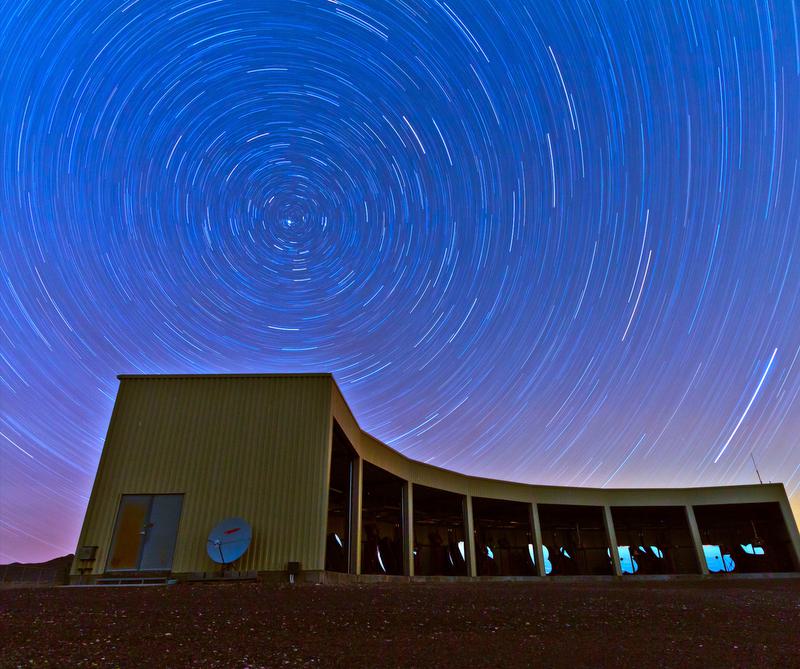Description

Disclaimer: Copyright infringement not intended.
Context
A cosmic ray that has been dubbed ‘Amaterasu’ appears to have reached the earth from an empty part of the universe; this ‘suggests the possibility of unknown astronomical phenomena and new physical origins beyond the Standard Model’ in the area of origin.
Details
- Japanese scientist Toshihiro Fujii discovered the second-highest-energy cosmic ray in May 2021, ‘Amaterasu’.
- It is named after the sun goddess in Japanese mythology.
- He discovered the cosmic ray when analysing data collected between May 2008 and November 2021 by the Telescope Array Project in the U.S.
Significance of Amaterasu's Discovery
- The discovery of the Amaterasu cosmic ray, with its unprecedented energy of 240 EeV, challenges existing theories and provides a unique opportunity to explore new realms of physics.
Unanswered Questions:
- Unknown Source: The lack of an identified astronomical object in the direction of Amaterasu's origin raises questions about potential unknown sources in the universe.
- Magnetic Field Interaction: The possibility that the particle interacted with a stronger magnetic field challenges current models, emphasizing the complexity of cosmic ray propagation.
Mass Ratio of Helium to Hydrogen Nuclei:
- The observed mass ratio of helium to hydrogen nuclei in cosmic rays mirrors the early universe's abundance, suggesting a link between cosmic ray composition and the primordial cosmos.
Challenges:
- The immense energy of the Amaterasu cosmic ray, 40 million times that of particles produced by the Large Hadron Collider, presents a challenge for existing theoretical frameworks.
- The search for theoretical models capable of explaining such extreme energies can lead to groundbreaking advancements in our understanding of particle physics.
- The limitation imposed by the Cosmic Microwave Background (CMB) on ultra-high-energy cosmic rays prompts a reevaluation of the distances and energies involved in cosmic ray travel.
- Understanding the suppression of UHECRs above certain energy thresholds contributes to refining our cosmic ray models.
Future Prospects:
- The Amaterasu event underscores the importance of international collaborations, such as the Telescope Array Project, in advancing cosmic ray research.
- Insights gained from the analysis of high-energy cosmic rays may have implications for broader areas of astrophysics, including the study of dark matter and the nature of the early universe.

About Cosmic Rays
- Cosmic rays are high-energy charged particles that originate from various sources beyond our solar system.
- They include protons, electrons, and atomic nuclei, with energies spanning a wide range.
- Cosmic rays were first discovered in 1912 by Victor Hess during a balloon flight.
- Unlike electromagnetic radiation (such as light or radio waves), cosmic rays are charged particles accelerated to high energies by astrophysical processes.
Sources of Cosmic Rays:
- Solar Origin: Solar cosmic rays are primarily produced during solar flares and coronal mass ejections.
- Galactic Origin: Galactic cosmic rays are believed to originate from supernova explosions, interacting binary star systems, and other astrophysical events in our Milky Way galaxy.
- Extragalactic Origin: Ultra-high-energy cosmic rays (UHECRs) with energies exceeding 10^18 electron volts may come from extragalactic sources, but their exact origin is still under investigation.
Composition of Cosmic Rays:
- Protons and Helium Nuclei: Predominant components of cosmic rays, making up about 99%.
- Heavy Nuclei: Elements heavier than helium contribute to the remaining 1%.
- Electrons and Positrons: Cosmic ray electrons and positrons, while a small fraction, are crucial for understanding high-energy astrophysical processes.
Energetics of Cosmic Rays:
- Cosmic ray energies span a wide range, from 1 MeV (Million electron volts) to beyond 10^20 eV.
- The "knee" in the cosmic ray spectrum represents a change in the power-law behavior of the energy spectrum, and the origin of this feature is an active area of research.
Detection:
- Ground-Based Observatories: Cosmic ray detectors on Earth measure secondary particles generated when primary cosmic rays interact with the atmosphere.
- Space-Based Observatories: Satellites and space telescopes provide valuable data on cosmic rays by avoiding atmospheric interference.
Impact on Astrophysics and Cosmology:
- Astrophysical Processes: Cosmic rays play a crucial role in shaping the interstellar medium, influencing star formation, and contributing to the heating of galactic and intergalactic gas.
- Cosmic Microwave Background (CMB): High-energy cosmic rays may interact with the CMB, providing insights into the early universe's conditions.
- Dark Matter Search: Cosmic rays can be used to indirectly probe the existence and properties of dark matter particles.

Conclusion
Cosmic rays are fascinating phenomena with wide-ranging implications for astrophysics, cosmology, and our understanding of the universe. Ongoing advancements in observational techniques and theoretical models continue to deepen our knowledge of these high-energy particles.
|
PRACTICE QUESTION
Q. Examine the impact of the discovery of the Amaterasu cosmic ray on astrophysics and high-energy particle physics, highlighting challenges to current theories and the potential for new insights into cosmic phenomena. (250 Words)
|














